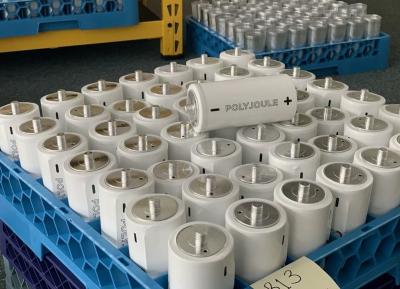PolyJoule, a spin-off of the Massachusetts Institute of Technology (MIT), recently unveiled a new battery technology based on its own proprietary conductive polymers and other organic, non-metallic materials.

The battery cells were reportedly tested to perform for 12,000 cycles at 100% depth of discharge. The device is based on a standard, two-electrode electrochemical cell containing the conductive polymers, a carbon-graphene hybrid, and a non-flammable liquid electrolyte. Alternating anodes and cathodes are interwoven and then connected in parallel to form a cell.
The battery may be used for utility and industrial applications such as power conditioning, peak shaving, frequency regulation, hybrid power energy storage, and high-power datacenter backup, the company detailed.
According to the MIT Technology Review, the battery packs are up to five times larger than lithium-ion systems of the same capacity and don’t require active temperature control. The product is being offered in power strings which the company said can rapidly discharge power, up to 1 MW, in less than 10 seconds and be recharged in less than five minutes.
Each power string measures 2.2 m x 0.8 m x 3.4 m and weighs 1,590 kg. Its nominal voltage is 528 V and the voltage range is 158 V to 972 V. The manufacturer ensures continuous operation at temperatures between -40 C and 50 C with minimal capacity loss. The battery contains no lithium, cobalt or lead and, according to PolyJoule, it is from abundantly available raw materials with no rare earth elements.

